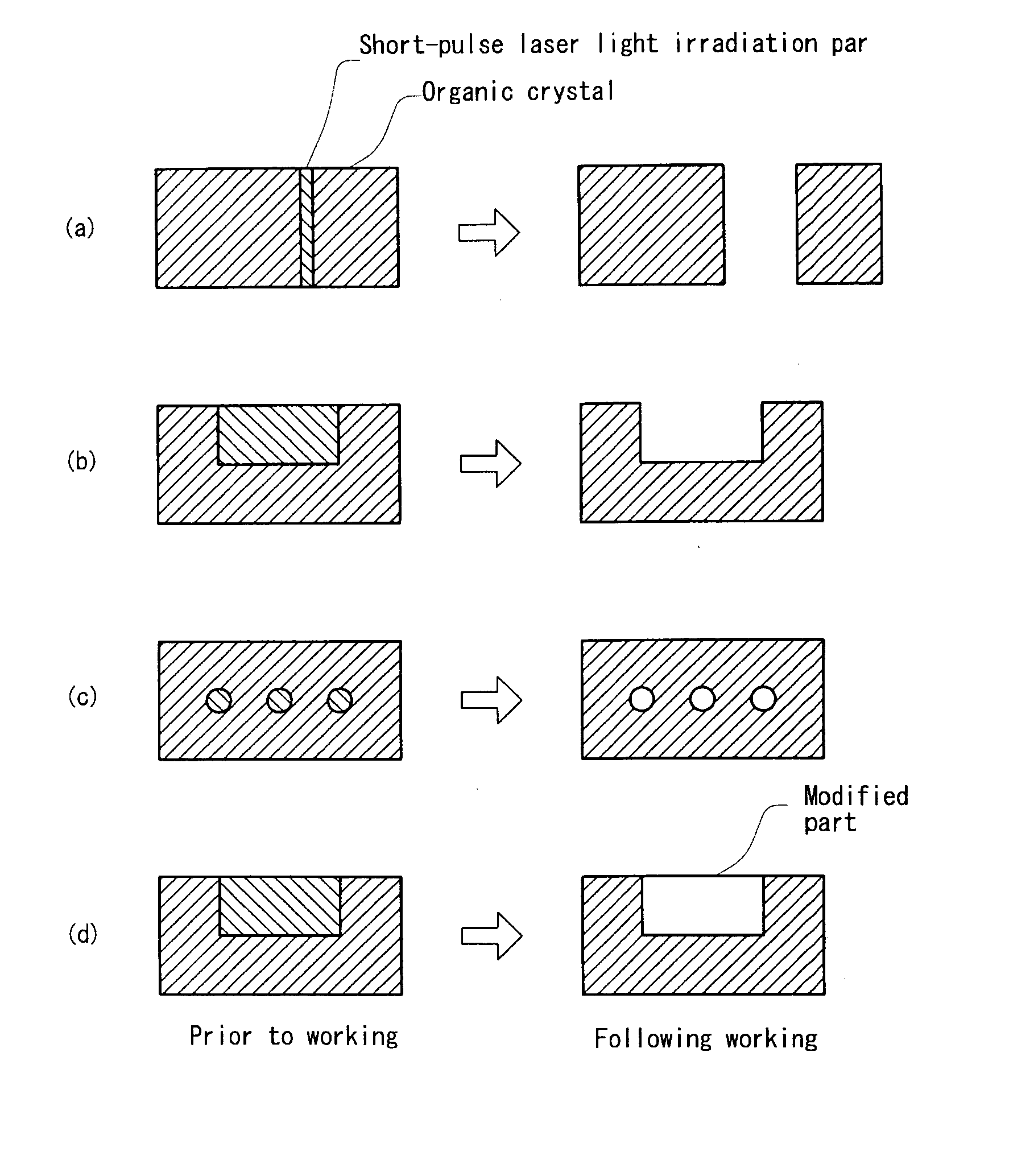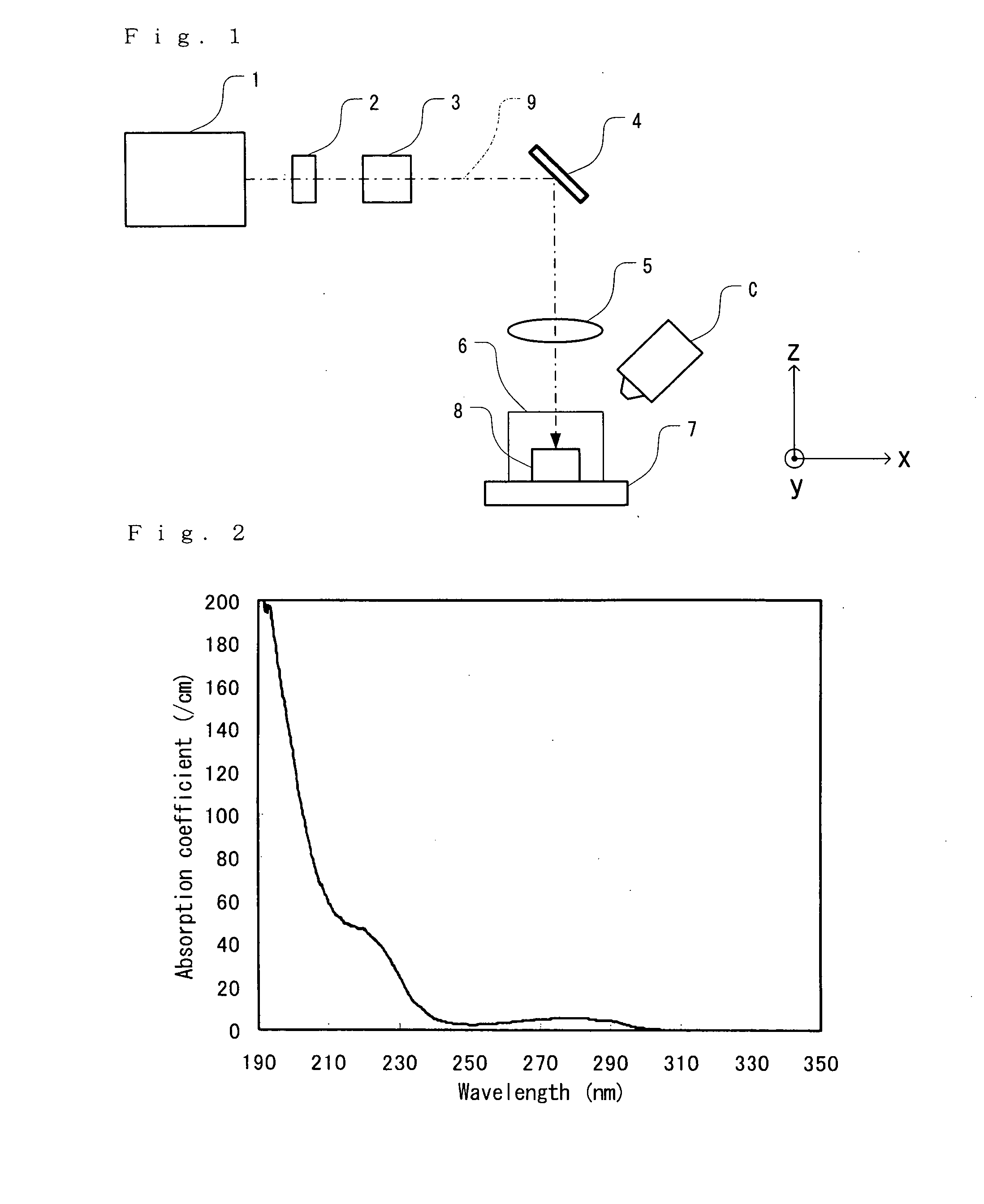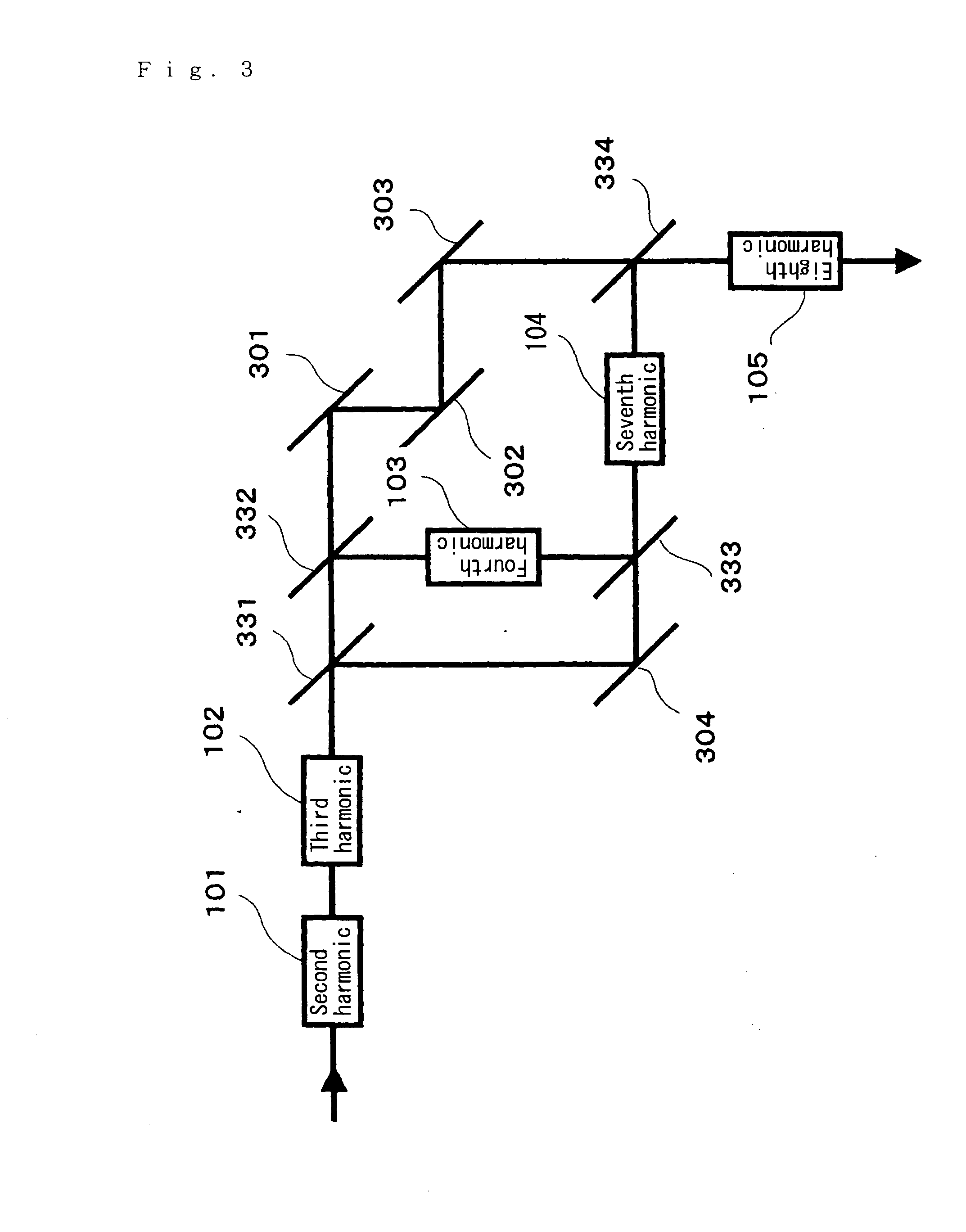Processing Method For Organic Crystal, Processing Device For Organic Crystal, And Observing Device For Organic Crystal
a processing method and organic crystal technology, applied in the direction of material analysis using wave/particle radiation, crystal growth process, gel state, etc., can solve the problems of work surface not being as expected in some instances, work surface damage by heat, and object of work must be first returned to an ordinary temperature, etc., to achieve the effect of reducing the absorption of short-pulse laser light by liquid, high degree of precision and increasing working efficiency
- Summary
- Abstract
- Description
- Claims
- Application Information
AI Technical Summary
Benefits of technology
Problems solved by technology
Method used
Image
Examples
embodiment 1
[0125] In order to investigate the basic characteristics of the working method of the present invention, a single crystal of phosphoenol pyruvic acid carboxylase (PEPC), which is a protein, was irradiated with ultraviolet short-pulse laser light having a wavelength of 193 nm using an apparatus of the type shown in FIG. 1; as a result, the crystal was cut in two.
[0126] The grown PEPC crystal was scooped up with a loop as shown in FIG. 4 (a) and held by surface tension. In this state, a low-temperature gas using nitrogen was caused to jet onto the PEPC crystal, the solution supporting the crystal, and the loop so that these were cooled to a low temperature. A photograph of the crystal prior to working is shown in FIG. 9 (a), and its model diagram is shown in FIG. 9 (b).
[0127] In a state in which a low-temperature gas was continuously caused to jet, irradiation was performed with approximately one million shots of laser light having a repetition frequency of 3.4 kHz, a pulse width of...
embodiment 2
[0129] A membrane protein single crystal (AcrB crystal) was irradiated with ultraviolet short-pulse laser light having a wavelength of 193 nm using an apparatus of the type shown in FIG. 1. As a result, the crystal was cut in two.
[0130] The grown AcrB crystal was scooped up with a loop as shown in FIG. 4 (a) and held by surface tension. In this state, a low-temperature gas using nitrogen was caused to jet onto the AcrB crystal, the solution supporting the crystal, and the loop so that these were cooled to a low temperature. A photograph of the crystal prior to working is shown in FIG. 10 (a), and its model diagram is shown in FIG. 10 (b).
[0131] In a state in which a low-temperature gas was continuously caused to jet, irradiation was performed with approximately one million shots of laser light having a repetition frequency of 3.4 kHz, a pulse width of approximately 1 ns, a spot diameter of 20 μm, and an energy density of 50 mJ / cm2 while moving the spot at 0.5 mm / sec, and the loop ...
embodiment 3
[0132] X-ray diffraction patterns were measured before and after the working of a protein single crystal (egg white lysozyme crystal) by irradiation with ultraviolet short-pulse laser light having a wavelength of 193 nm using an apparatus of the type shown in FIG. 8, and the data obtained was compared. In the measurements of the X-ray diffraction patterns, an ultraX18 (voltage 50 kV, current 100 mA) manufactured by Rigaku Denki Co. was used as the X-ray generating device, and a RAXIS IV++ was used as the detector. In the respective measurements, the distance between the crystal and detector was set at 150 mm, the detection angle was set at 2°, the measurement time was set at 10 minutes / 2°, and the range of the measurement angles was set at 20°.
[0133] The grown egg white lysozyme crystal was scooped up with a loop as shown in FIG. 4 (a) and held by surface tension. In this state, a low-temperature gas using nitrogen was caused to jet onto the egg white lysozyme crystal, the solution...
PUM
| Property | Measurement | Unit |
|---|---|---|
| temperature | aaaaa | aaaaa |
| wavelength | aaaaa | aaaaa |
| temperature | aaaaa | aaaaa |
Abstract
Description
Claims
Application Information
 Login to View More
Login to View More - R&D
- Intellectual Property
- Life Sciences
- Materials
- Tech Scout
- Unparalleled Data Quality
- Higher Quality Content
- 60% Fewer Hallucinations
Browse by: Latest US Patents, China's latest patents, Technical Efficacy Thesaurus, Application Domain, Technology Topic, Popular Technical Reports.
© 2025 PatSnap. All rights reserved.Legal|Privacy policy|Modern Slavery Act Transparency Statement|Sitemap|About US| Contact US: help@patsnap.com



